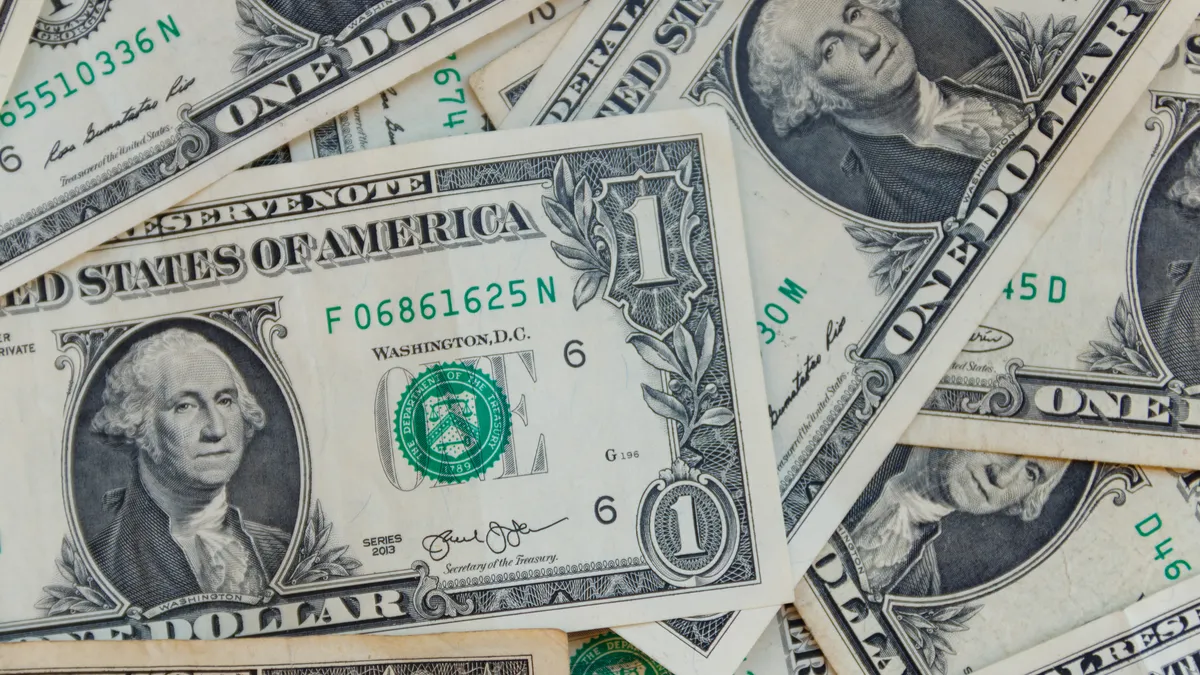Dive Brief:
- The core consumer price index, excluding volatile food and energy prices, rose last month at a 3.3% annual rate, exceeding forecasts and bolstering predictions that the Federal Reserve at its gathering next month will limit its cut to the main interest rate to a quarter percentage point.
- Costs for shelter, apparel, motor vehicle insurance, medical care and airline tickets helped fuel the increase in core CPI, the Bureau of Labor Statistics said Thursday. So-called headline inflation, which includes food and energy prices, increased at a 2.4% annual rate in September, also above the Fed’s 2% target.
- “Inflation is dying but not dead,” Olu Sonola, Fitch Ratings head of U.S. Economic Research, said in an email. “This report encourages the Fed to maintain a cautious stance with the pace of the easing cycle,” he said, predicting a quarter-point rate reduction next month and advising that “a December cut should not be taken for granted.”
Dive Insight:
The Fed on Sept. 18 cut the federal funds rate by a half percentage point to a range between 4.75% and 5%. The decision prompted a dissenting vote, and minutes of the meeting released Wednesday suggest that some central bank officials believed that the first trim to borrowing costs since 2020 should have been a quarter point.
“Some participants observed that they would have preferred a 25-basis-point reduction of the target range at this meeting, and a few others indicated that they could have supported such a decision,” according to the minutes.
Less-than-unanimous support for the Fed’s half-point easing and a report Friday of unexpectedly strong hiring by U.S. employers last month have quashed expectations of another half-point reduction at the end of a two-day monetary policy meeting on Nov. 7.
During the past week traders in interest rate futures slashed from 32% to zero the probability that the Fed will trim the federal funds rate by a half percentage point at its next scheduled meeting on Nov. 6-7, according to the CME FedWatch Tool. They see 82% odds of a quarter-point easing.
New York Fed President John Williams did not note the new report of persistent inflation in a speech Thursday.
“Inflation has come within striking distance of our 2% goal,” said Williams, who also serves as vice chair of the policy-setting Federal Open Market Committee.
“I expect that it will be appropriate to continue the process of moving the stance of monetary policy to a more neutral setting over time,” Williams said, referring to an interest rate that neither spurs nor slows economic growth. “The timing and pace of future adjustments to interest rates will be based on the evolution of the data.”
Chicago Fed President Austan Goolsbee also voiced confidence that price pressures are falling toward the central bank’s target.
“Let's not get worked up about one report, these are noisy series,” Goolsbee said Thursday in a CNBC interview after release of the CPI data.
“The overall trend is what's important, not the day to day fluctuations, and the overall trend over 12 to 18 months is clearly that inflation has come down a lot,” he said.
Most Fed officials in recent days have echoed comments by Fed Chair Jerome Powell on Sept. 30 emphasizing that the central bank intends to gradually trim borrowing costs.
The FOMC “is not a committee that feels like it’s in a hurry to cut rates quickly,” Powell said during a National Association for Business Economics webcast.
“If the economy slows more than we expect, then we can cut faster — if it slows less than we expect, we can cut slower,” he said in response to a question. “We’re looking at a process that will play out over some time, not something we need to go fast on.”












